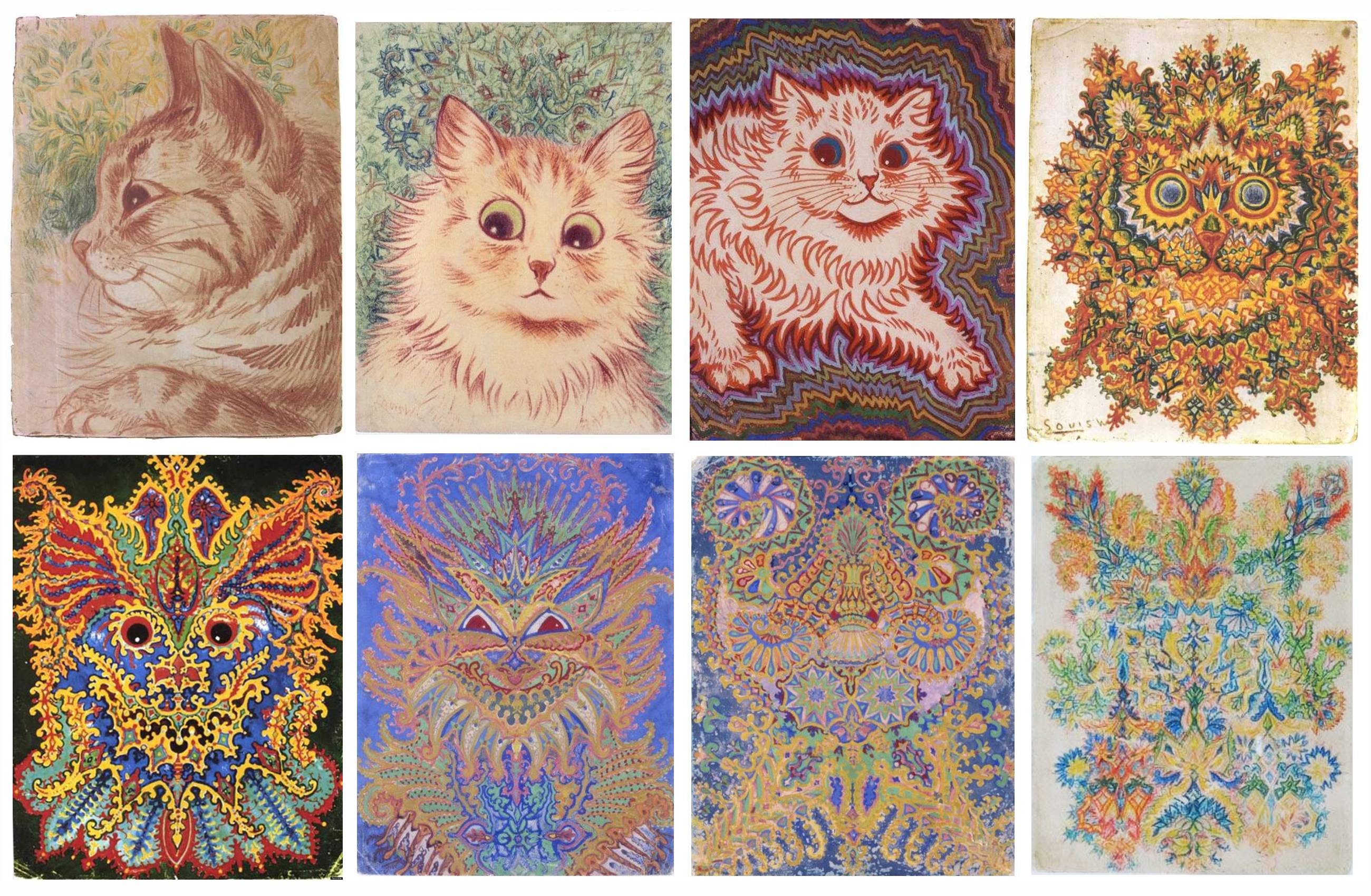 The Art: Cats
The Art: Cats
The Artist: Louis Wain
On a stormy night in the north of London, a young artist named Louis Wain was sitting in his house when he heard something unusual amidst the pitter-patter of the rain.
He opened his door, and there he found a straying black and white kitten, mewing in hope of shelter. Louis and his wife, Emily, took in the stray, and named him Peter.
Not long after, Emily was diagnosed with breast cancer, and Louis noted that nothing was quite able to lift her spirits quite like Peter’s presence. So he began sketching pictures of the cat to hang around Emily’s room; pictures that would come to define his career.
In 1886, the same year as Emily’s death, the first collection of Louis’s cat art was published. Entitled A Kittens’ Christmas Party, it depicted 150 cats preparing for a party. It wasn’t hugely successful, but it was a start.
Over the following years, Louis started to anthropomorphise his subjects. They stood on two legs, gained large, expressive eyes, and took on more general human characteristics. Victorian England lapped it up.
Explaining his process, he wrote “I take a sketch-book to a restaurant, or other public place, and draw the people in their different positions as cats, getting as near to their human characteristics as possible. This gives me doubly nature, and these studies I think (to be) my best humorous work”.
The process would produce thousands of cat drawings over the next three decades. Louis’s sketches could be found adorning postcards, children’s books (about 100 of them), and magazines, the most sought after of which was the Louis Wain Annual, which ran for 15 issues.
Louis’s pictures did more than entertain – they came to define England’s view of the entire species. He became active in a range of animal charities, and served as President for the National Cat Club.
Yet for all his success, Louis suffered financially. Driven by his passion, as well as memories of Emily and Peter, he had little business acumen, and so was often exploited. It was his sisters who supported him through these years, though that would change as he started to show signs of erratic behaviour.
Rumour has it that Louis developed schizophrenia, but whatever the reasoning, his family could no longer deal cope. They committed him to Springfield Mental Hospital in 1924.
Once fans, including writer H. G. Wells and Prime Minister Stanley Baldwin discovered this, they petitioned to have him relocated. Louis was transferred to Bethlem Royal Hospital, then Napsbury Hospital, where he would live the rest of his life.
Napsbury was a beautiful place with a quaint garden and a colony of cats. Louis flourished in this environment, and though he continued using cats as his subject, his newfound affinity for nature may explain the more expressionist style presented in the collage above.
The work of Louis Wain is more popular today than ever before. As Wells put it, “He has made the cat his own. He invented a cat style, a cat society, a whole cat world”.
More than that, his story is one of love and art, a story of a man who lost his love at a young age, but continued to carry the memory of what made her most happy throughout the rest of his life, and turn it into something unforgettable.

